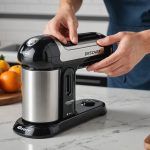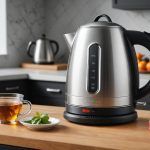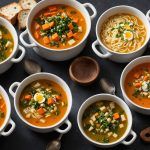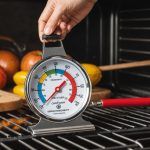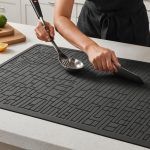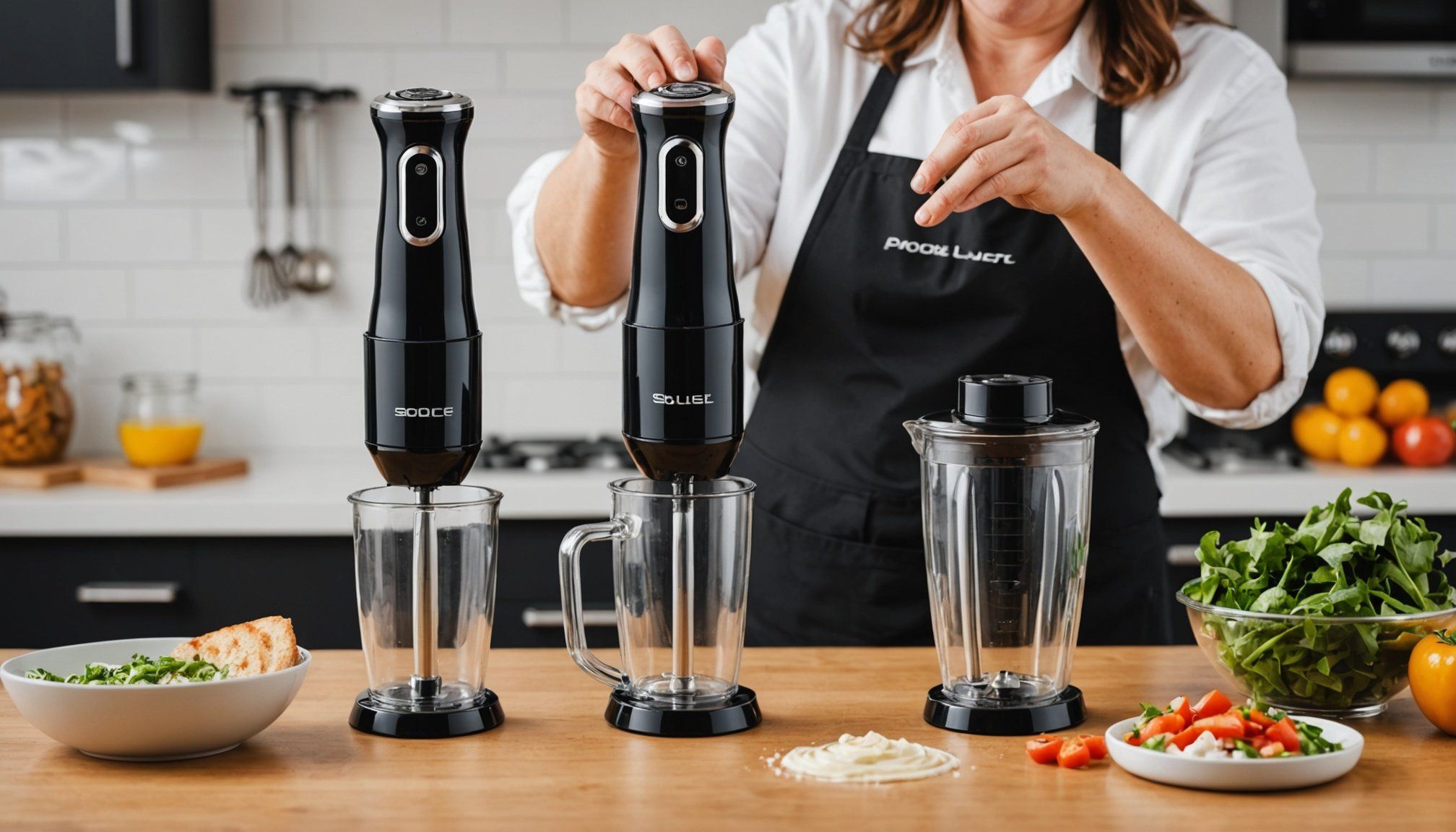Key Features of Hand Blenders for Soup Preparation
Crafting the perfect soup with a hand blender hinges on selecting tools with essential features for efficient blending. First, consider the importance of motor power and speed variability. A robust motor can efficiently tackle various soup ingredients, especially if they include harder components. Speed settings provide control, ensuring everything blends to the desired consistency, whether smooth or chunky.
Blade design plays a pivotal role in blending effectiveness. Well-crafted blades can handle soup ingredients more uniformly, promoting a seamless texture. Various blade shapes serve different purposes, such as slicing through tough items or creating a vortex that draws chunks in for even blending. The material of the blades is also crucial, as it contributes to durability and ease of maintenance.
Also read : The Ultimate Guide to the Healthiest Electric Kettle Materials: Which One is the Safest for You?
Finally, the ergonomics of hand blenders cannot be overstated. Ergonomic design with comfortable grips and balanced weight distribution minimizes fatigue during extended soup preparation sessions. Models with vibration reduction technology further enhance comfort, making the process of creating soups more enjoyable and sustainable over longer periods. With these features in mind, preparing soups can be an effortless, joyful experience.
Blade Design and Functionality
When considering hand blenders for soup preparation, the blade design significantly influences blending efficiency and soup consistency. Different blade shapes cater to specific needs, impacting how well a blender can manage various ingredients.
Have you seen this : Discover the Best Pot Choices for Perfectly Simmered Soups: A Guide to Slow Cooking Essentials
Understanding Different Blade Shapes
Blade shapes often vary to optimize for specific outcomes. Some are engineered to create a vortex, pulling ingredients in for a more even blend, while others focus on slicing through tougher items efficiently. The design intricacies can significantly affect the blending result, making it crucial to choose the right type for your soup preferences.
Benefits of Stainless Steel Blades
Material choice is vital, with stainless steel blades being favoured for their durability and sharpness. They resist rust and wear, ensuring long-term efficiency in handling diverse ingredients. Stainless steel is also easy to clean, maintaining hygiene standards in your kitchen.
Detachable vs. Fixed Blades
The decision between detachable and fixed blades affects both cleaning and storage. Detachable blades offer the convenience of easy disassembly, simplifying the cleaning process and enhancing maintenance. This feature can prevent wear from stubborn residues, enabling a prolonged lifespan for your hand blender.
Ergonomics and Comfort Features
In the realm of hand blender ergonomics, focusing on user comfort is paramount. Hand blenders designed with ergonomic elements prioritize ease of use during extended blending sessions. A well-thought-out design enhances the grip, making it easier to hold and operate, even over prolonged periods.
When considering a hand blender, weight is crucial. A lightweight model reduces arm fatigue, encouraging longer, more enjoyable soup preparation efforts. Balancing the weight of the blender ensures it feels neither too heavy nor too flimsy, facilitating controlled handling.
An additional feature that significantly improves comfort is vibration reduction technology. This innovation minimises vibrations felt during operation, adding another layer of comfort, especially appreciated during long blending tasks. This is particularly beneficial when blending dense or hard ingredients, where higher vibrations might otherwise cause discomfort.
Addressing these ergonomic and comfort aspects can transform your soup-making journey into a pleasant experience, reducing strain and enhancing efficiency. By prioritising these factors, one can confidently choose a hand blender that is not only effective but also delightful to use.
Cleaning and Maintenance
For optimal hand blender performance, efficient cleaning and maintenance are crucial. Selecting models with easy-to-clean components can significantly reduce preparation time. Look for features like detachable shafts that allow hassle-free disassembly, making every nook and cranny accessible for cleaning. This design ensures that no stubborn residue remains trapped, preserving the blender’s function and hygiene.
Importance of Easy-to-Clean Components
Blenders with dishwasher-safe parts simplify the cleaning process, saving time and effort. Components that can endure the dishwasher‘s heat without degrading maintain both cleanliness and longevity. Prioritising these elements can lead to a more sustainable kitchen appliance.
Tips for Optimal Maintenance
Regular maintenance is vital for extended appliance life. After every use, inspect and clean all parts thoroughly to prevent build-up. Always follow manufacturer guidelines for cleaning and storage. Utilising gentle detergents and avoiding abrasive materials will help maintain component integrity. Ensuring parts are completely dry before reassembly prevents mould growth and corrosion, safeguarding your blender for consistent use. Proper care not only extends your hand blender’s life but also continuously delivers efficient blending performance.
Compatibility with Ingredients
Understanding a hand blender’s ingredient compatibility is crucial for diverse soup preparation. An efficient hand blender should seamlessly handle various soup ingredients, accommodating different consistencies from chunky to smooth. This requires a blender adept at managing both soft and hard ingredients without compromising texture or functionality.
Ideal for Various Consistencies
Hand blenders are designed to cater to a range of consistencies in soups. From creamy bisques to chunky vegetable medleys, these appliances provide the versatility necessary for achieving desired textures. Selecting a blender that offers multiple speed settings can further enhance control over consistency.
Impact of Ingredient Hardness
The hardness of ingredients is a critical consideration. Tougher items like squash or carrots may demand more robust motor power to ensure thorough blending. An underpowered blender might struggle, leaving undesirable chunks in smoother soups.
Suggestions for Blending Diverse Ingredients Effectively
For optimal performance, choose a hand blender with sharp, durable blades tailored for ingredient versatility. Such a blender can efficiently process a wide array of foods, from fibrous greens to boiled legumes. This adaptability not only enhances soup quality but also expands your culinary repertoire, allowing you to explore and perfect diverse recipes.
User Reviews and Recommendations
Exploring hand blender reviews can provide important insights into how different models perform in practical soup preparation. User experiences often highlight key strengths and weaknesses that aren’t always evident in product specifications.
Analysis of Top Models for Soup Making
Many reviews focus on top models known for their reliable performance in crafting soups. High ratings often correlate with essential features, like robust motor power and efficient blending capabilities, proving vital for handling a variety of soup recipes.
User Ratings and Feedback Insights
Insights from user feedback can pinpoint specific pros and cons of each model. Common complaints may involve motor noise or weight, while positive remarks frequently commend ergonomic designs and effective speed settings for consistency control.
Recommendations Based on Experience Levels
For novices, simpler models with fewer speed settings might suffice, facilitating an easy entry into culinary ventures without the complexity of advanced features. Conversely, experienced cooks might benefit from models offering multiple blade types and enhanced motor power for versatility and performance. Adapting the selection to personal skill level and specific needs ensures a rewarding soup-making experience.
Conclusion: Choosing the Right Hand Blender
Identifying the right hand blender selection for your soup creation endeavours can enhance your kitchen experience. When preparing soups, focusing on essential features such as robust motor power, effective blade types, and comprehensive speed settings will ensure efficient blending that meets your texture preferences. Each element plays a critical role in crafting a hand blender that effortlessly adapts to various soup recipes.
It’s crucial to acknowledge that soup preparation doesn’t hinge solely on power but also on the blend of features that cater to specific culinary preferences. Considering ergonomic designs enhances comfort and usability over extended periods. Models featuring vibration reduction technology can further ease prolonged use.
In making your final recommendations, weigh personal preferences and practical needs. Reading extensive user reviews can provide further insights into how various models perform in real-world settings, offering experiences that enrich your decision-making process. Analysing experiences based on your cooking proficiency will help tailor choices effectively, ensuring both novices and seasoned cooks find the right match for their skills and culinary ambitions. This approach ensures you select a tool that aligns with your needs, elevating your soup-making to new heights.

